The Age of Streaming Services: Then, Now, and Beyond
“My family are huge TV watchers. We will, unfortunately, subscribe to everything”, states an anonymous comment made by a viewer in a public survey. It is common to feel impotent towards new movies and tv shows releasing online every week. The Internet made content accessible for the public, but the catch is that the viewers feel the need to keep up with it all both financially and otherwise.
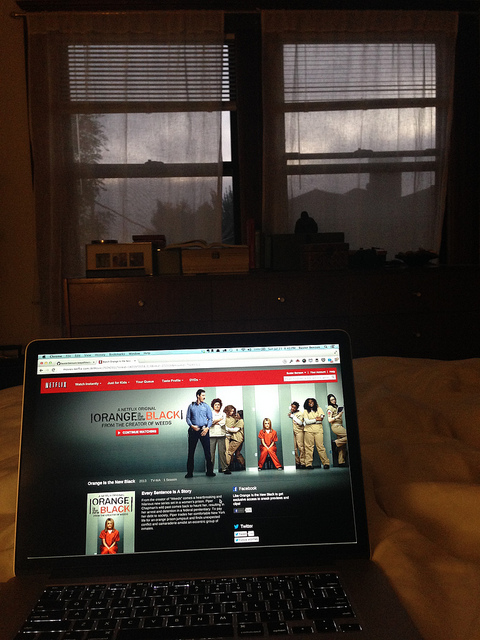
Streaming is replacing the beloved TV in the average household. Whether it is Netflix, Hulu, or Amazon Prime, (or all three!), there is a guest in the house who will literally cut the cable, and, it may be here to stay. So, how did the average consumer welcome streaming without a visible transition? It started with a live internet video by some tech company nerds in 1993. It was a poor attempt that used up half of the available bandwidth of the entire internet. In 1994, the New York Times referred to the Rolling Stones as “the first [major] rock band in cyberspace” to promote their music to millions of streamers. As you can imagine, there was some controversy about who was first and what should’ve been written in Rolling Stones’ press releases. Fast forward to 2005, Saturday Night Live (SNL) released its first video short on Youtube, right around the time that the service started becoming popular. In 2017, Netflix, previously known to be a mail-order service, introduced its on-demand platform and became an influencing figure as both a content-producer and provider. Today, the same company has 24 Oscar nominations (2020).
The Death of Television
The Universal TV Problem is perhaps rooted in its adaptable nature. In the 40s, the black chunky boxes found their place in the American home and made their debut a little later internationally in the 70s. As Media Theorist Neil Postman discussed foreseeingly in the 80s, the average family (despite their income) started positioning their couches to face the television. And the television found its purpose as the entertainer, silence-filler, and now, a mere accessory.
Our brains spend too much uncommitted time in front of the television to truly commit to its information. The television is rapidly dying along with the broadcast news. We retain less and less of what we hear and even forget where we heard it from. It is not to say that there weren’t any attempts at bringing different content with a monetary cost like subscription TV—However, nothing seemed to help the fate of once adored television.
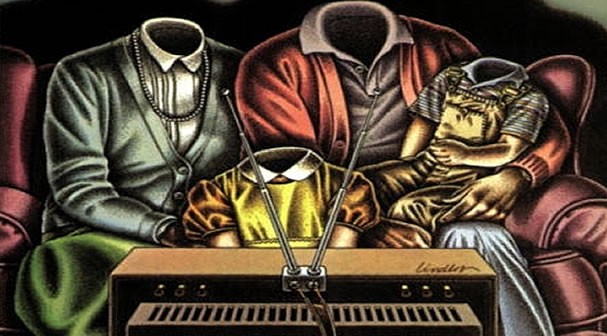
What Now? A New Place for the Televisual Content
While the traditional network executives have been busy planning detailed marketing strategies, streaming services are releasing a notable number of original shows every month. The subscribers are seated to be entertained by different content continuously, leaving no time for boredom and rewarding a few of the eager viewers with the binge-watching curse. Yes, the entertainment machine takes a new form in 2020, however, the viewers have all freedom they would need to make the choice on their exposés.
Binnur Karaevli, the director-producer, and screenwriter of Netflix’s critically acclaimed The Protector [Hakan Muhafiz], stated in an interview (Vancouver, BC) “Future is really the streaming services. Of course, the networks will continue, but right now, we have Netflix, Amazon [Prime], Apple [TV], and recent additions like Disney Plus and HBO Max.” Karaevli is the first Turkish filmmaker to score a deal with Netflix (NFLX), the global market leader. Netflix is projected to have an 86.3% penetration in the US market.

Streaming Services: An International Powerhouse
Streaming services are writing history while the traditional broadcast TV is rapidly losing its viewers. Amongst other reasons, it may be true that streaming services are the reason for the decreasing rate of television viewership. Karaevli states, “It’s a completely different way of doing business [compared to local filmmaking in Turkey]”, she adds, “Doing the first one [globally-accessible production] is always challenging—but exciting, too.” The streaming productions do not target a specific local group nor suffer from network or government bans, which means they can offer fresh opportunities for diverse content. Karaevli suggests, “In fact, it is helping the industry. The streamers are international so, it is a huge plus.” Prior to the rise of the stated services, US-based networks like ABC, NBC, targeted the American culture. “Today, streaming services you can access productions from Turkey, and all around the world— which I find exciting!” says Karaevli (See, references for further information on the interviews).
Familiar Faces: The Mouse House
2019 solidified the presence of streaming services in the average household with releases of highly expected services like Apple TV and Disney Plus. Specifically, Disney was expected to be Netflix’s biggest rival. As the President of Marketing Asad Ayaz stated in an interview, it was important for Disney to market the films that spoke to the now-older audience and expand their horizons for the youth. It was inevitable for Disney to develop the much-talked remakes to achieve these two goals at the same time. It is forecasted that Disney Plus will have 60 to 90 million global subscribers by 2024. According to A.J. Black, the author of Myth-Building in Modern Media, there are already too many services in the market. Black states, “People will inevitably dip in and dip out of subscriptions, but it could lead to some trying to lock down customers for long[er] subscription periods”, and adds, “If they do, that could cause problems if too much content is still diversified across platforms”.
Gold Standards Established by the Users
The results from a public survey conducted upon the development stage of this article showed: 86% of the viewers stuck with Netflix, followed by Amazon Prime (41%), Hulu (25%)*. It was surprising to see Disney Plus (16%) was not amongst the first choices for the viewers. However, it should be noted that there are simply too many countries that Disney Plus has not been released yet. 48.94% of the streamers stated they would be purchasing a Disney Plus membership upon its availability in their countries. 81.63% of the streamers were satisfied with the service they have been using.
Streamers first considered 1) a wide range of older shows (78%), 2) the purchase price (77%), 3) original (new) shows (69%), and 4) brand reputation (30%) to affect their decision of purchasing a membership. Others noted, “interface design and usability”, “advertising”, “lack of exclusivity and geo-blocking”. Streamers also preferred to have “access to episodes all at once (85.19%)” over having “access to one episode on the release date (14.81%)”.
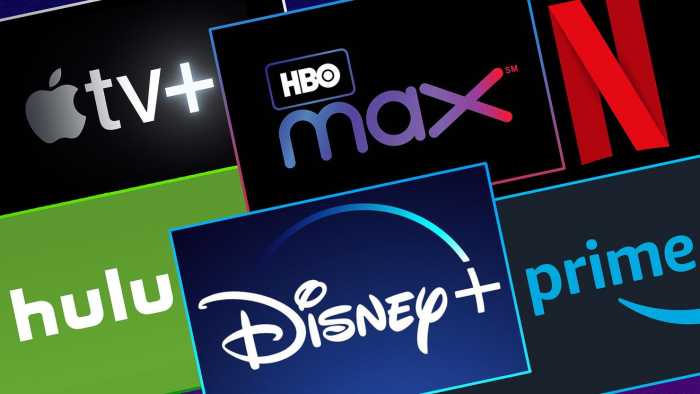
What the Streamers Say
“I don’t care about new originals; I base my purchases solely on the shows and movies I am specifically looking to watch. Thus, I am about to drop Hulu and Disney+ and will use Netflix until I have seen everything on there I care about. I have zero brand loyalty.”
“I would only pay for a maximum of 2 streaming services. I think what each company has done in creating their own service is stupid and I refuse to pay for it – instead, I’ve just gone back to torrenting, which is a shame because I prefer legally streaming but I can’t afford 5+ memberships.”
“There’s too many available right now – we’re back to where we started with cable.“
“Streaming services should be about service, but currently they revolve around exclusivity (which I find an immoral monopoly) and geoblocking (despite being provided through the internet, which is global). Because of that moral objection I don’t subscribe to any and resort to the moral alternative of piracy.”
“It’s smart business. Streaming has the potential to eventually eradicate common TV entertainment…or…they have the potential to be put on TV channels of their own, to be a part of cable/satellite packs at everyone’s disposition.”
“It’s turning back into Cable. People are going to be back to pirating shows before long. I am concerned about the withdrawal of physical media from the market.”
“Until a streaming service can reliably provide me with anything I want at a moment’s notice better than my own library can, I’m not interested and I’ll continue to use my own library.”
“Stream services are dying. The appeal used to be you’d have one or two sites that had practically everything, so it was a nice convenience price. But now everyone and their mouse want a slice, and we’re dealing with a bunch of sub-par services where you’re lucky to find a single worthwhile show. So yeah, back to just stealing what I would otherwise more than happily pay for if they didn’t make it so pointlessly hard to do so”.
“Streaming is going to die, everyone will go back to pirating again.”
The Grand Finale
Streaming services already created a need to catch up with the flood of neverending content, and pulled TV’s plug– It is even beginning to threaten the business of movie theatres. The business model used to be based on streaming platforms pulling older seasons of shows and attracting viewers to the newer content that could be found in the traditional TV. The production of original content exclusively for the online platforms started taking life away from the TV, and potentially movie theatres. To be fair, if a consumer can watch an Academy Winner movie at the comfort of their home, why would they attend a niche film festival and pay extra for it? (Streaming productions often make their debut as a part of these festivals and find their way to the on-demand platforms a short while later).
It would be cruel to ignore other truths: Streaming is currently reviving the film industry, opening doors to international content, and allowing viewers to choose what, when, where, and how much they want to watch certain content. In short, streaming services give the viewer their freedom. However, this also has monetary costs. As the anonymous comments state, the availability of content in separate platforms forces the viewers to purchase several memberships. In practice, it makes sense; in reality, the average person cannot (and likely will not) spend 50 bucks per month to watch a new form of TV. And, they most certainly will not want to be tied to years-long subscription periods.
A significant number of streamers already seem like they are going back to illegal methods to access online content. Pirating seems to be the only way to make a leap out of the diverse number of exclusive content that these platforms offer. This will eventually hurt the film industry, but for now, it is still the golden age of streaming services.
References
Amusing Ourselves to Death: Public Discourse in the Age of Show Business (1985) by Neil Postman
Binnur Karaevli interviewed in-person by Hazal Senkoyuncu in Vancouver, BC (2019).
Neiger, C. (2019, August 27). Netflix’s Market Share Is Shrinking, but It’s Still the King of Video Streaming. Retrieved from https://www.fool.com/investing/2019/08/27/netflix-market-share-shrinking-still-streaming.aspx
Online Interview of A.J. Black by Hazal Senkoyuncu (2020).
Poggi, J. (2019, December 9). Marketers of the Year No. 6: Walt Disney Co. Retrieved from https://adage.com/article/media/marketers-year-no-6-walt-disney-co/2221176
Roxborough, S. (2019, November 14). Netflix Dominates Global SVOD Market, but Local Services Gain Ground, Study Finds. Retrieved from https://www.hollywoodreporter.com/news/netflix-dominates-global-svod-market-but-local-services-gain-ground-1254438
Strauss, N. (1994, November 22). Rolling Stones Live on Internet: Both a Big Deal and a Little Deal. Retrieved from https://www.nytimes.com/1994/11/22/arts/rolling-stones-live-on-internet-both-a-big-deal-and-a-little-deal.html
Survey on “streaming services” conducted by Hazal Senkoyuncu, http://www.hazalscamera.com
Switchboard Live. (n.d.). Retrieved from https://switchboard.live/blog/live-streaming-history
What do you think? Leave a comment.





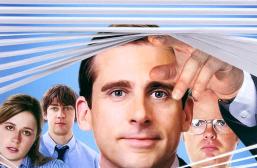

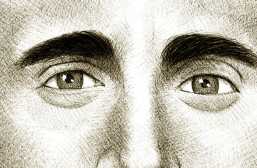



I may be in a minority, but I have no interest in watching streamed television programmes. I watch only DVD and BluRay, which I buy once they have been out for a while and are cheaper than they are at initial release. This has two advantages: (i) I do not need to interact with large organisations, which i find is always a pain at some point, and (ii) I don’t need to pay for a television license.
If television programmes stop being released on DVD and BluRay, I am similarly not bothered. I have sufficient material to keep me going for 7-10 years before I’ve watched all of it, by which time I will have forgotten and can watch it all again. If my interest in this material ever wanes, there are always books.
The future is box sets that you pay a monthly premium to watch, broadcasters no longer broadcasting. The internet isn’t open, it’s a collection of walled-off silos.
Certainly a novel approach, surely the best of boast worlds.
Where do you put all the DVDs? Did you have to build another extension to house the m!agazines?
Living in the edge!
I suspect the current model is unsustainable and a few of these will go out of business or merge. From speaking to friends who have various streaming services, they have no great interest in taking anymore on and might ditch their current subscriptions if the quality of the content drops much more. Most subscription models rely on apathy. People take on a new service at a great low price and then the company gradually raises it’s prices hoping they will either not notice or can’t be bothered to cancel. Usually at some point, we all look at our bank statements and say ‘Wow! Look how much am I paying for TV’ and then cancel.
Agree. This is the Gold Rush. In a year or two many of these newcomers will fade away, but they could cause lasting damage first.
This has been my exact experience with streaming, and I wholeheartedly agree that the current model is unsustainable.
Nothing that Netflix has done since Mindhunter/Manhunt: Unibomber has been compelling. Both of those were excellent but recently I’ve been wondering what I’m paying for. I really liked Bloodline, Stranger Things, The OA, early seasons of House of Cards. But recent stuff hasn’t interested me. I can see that some of it is beautifully produced (The Crown) but the target audience just doesn’t seem to be me.
For me, by far the best thing that Netflix produce are it’s long-form documentaries such as Wild Wild Country, The Keepers, Wormwood, Last Chance U, Flint Town and Making a Murderer which are truly outstanding. As long as they keep producing documentaries of this quality i shall continue with them. However, their original films are so bad it’s untrue, just by numbers guff. Their original TV series content is better, the likes of Mindhunter and Dear White People are great.
I call Netflix and similar stuff, “Disposable TV content.” One single use only. They put out 10, 20, 30 shows all together and people binge on them for two days and then they forget about them. They put a lot of content and if it’s not a hit, you don’t get a second season.
HBO always had two, three shows going and they put everything in the production and kept everybody talking about them. Netflix started similar with just a handful of good stuff, you had THE Netflix shows. And then, you have dozens and dozens of shows and since the seasons are all there maybe people talk about them for a week top and then that’s it. Plus they all decreased in quality.
I used to like Netflix a lot but now when I read “original from Netflix,” it’s such a turn off.
The true golden period of TV, in my view, was around 2004-2007 when HBO was airing: Six Feet Under, Deadwood, Carnivale, The Wire, Curb Your Enthusiasm and The Sopranos. Staggering quality.
Exactly this. Netflix original meant true quality initially. Now it could mean absolutely anything.
They put out 10, 20, 30 shows all together and people binge on them for two days and then they forget about them.
Memory is what we forget too.
Such a good point. “Disposable TV content” is the perfect term for what Netflix (and company) churns out. I’m embarrassed to admit that there are *so* many shows of which I’ve binged full seasons and then moved on without a second thought. They were simple background fodder while grading papers or household chores.
On the other hand, I watched both The Sopranos and The Wire for the first time over the past couple of months. The juxtaposition of going from mindless, crappy binge shows to those heavy hitting, dense, and renowned series was striking. It really made me think about the content I’ve been consuming.
I bless Netflix and Amazon for never having to buy a TV licence again.
What is a TV license?
There is more tv available every night than the average person hase life left to live,
I’m not interested in Netflix. Honestly, I probably never will. Give me the good old DVD.
On that note, I could upgrade to Blueray/Blueray-DVD.
Netflix did lose a lot of its catalog to concurrent streaming services, or to future streaming services. I’m talking about Netflix because it is the platform I know best, but is it the same for others? Is it to the same extent? And, if it is, is there not a risk that those services will become closer and closer to cable? As this article states, two of the factors that weigh on the choice of service are the number of older shows and the service’s price. If each production or entertainment company keep their own shows to themselves, to launch their own service for instance (as we are still in the golden age of streaming services!), or to sell them at a very high price to existing streaming platforms, the strength of those services will be greatly diminished! The offer will be divided between an increasing number of services, while subscriptions will be increasingly high. I’m not an economist or anything, but, regarding streaming services, is not a monopoly/an oligopoly the best way to enjoy shows on demand?
On another topic, does anyone knows why, on the same platform – let’s say Netflix because I don’t know about the others – but depending on the country you’re in, the shows you can watch aren’t the same? I understand why Netflix needs national subsidiaries, but why is the service different, as everything is owned by the same American company?
[I hope my long paragraph was understandable, as I am neither a native English speaker nor fluent in English – yet!]
You wrote wonderfully!
Thank you ! (Google did help me a lot, though !)
Netflix has definitely revolutionised how I view films and series.
In my mind it overlaps with the golden age of box sets that kicked in a few years back.
I think the whole box set thing and Netflix to make films a bit weightier as the audience have options if presented with the flimsy plots and characterisations that have come to characterise Hollywood blockbusters.
I have said elsewhere that Netflix is one of the many elements that is contributing to the existential crisis Hollywood is facing ( bigger than the advent of talkies or the dip at the end of the 60s) but seems largely oblivious to apparently from what I can see.
Great post. One aspect of Netflix that doesn’t get mentioned as much as it ought to : it breaks the “traditional” USA model of advertising-funded media. The UK has its (mandatory) license fee to fund the BBC; Netflix brings the concept of subscriber-funded TV to a new level.
Of course, there’s nothing about the subscriber-funded model that guarantees or even requires high quality programming. And yes, so far Netflix’ own productions have been a mixed bag. But the simple fact that we can watch people try to tell us stories without a break every 12/15/20 minutes to remind us about the new Lincoln Mercury (or whatever) is a momentous and welcome transformation.
I’m not forgetting that HBO and others were already doing this in their own way, but the traditional cost of HBO (only available as a premium extra on top of basic cable) really never made any sense for people with no interest in basic cable.
There’s also “public broadcasting”, with its mixture of government funding and a subscriber base. There’s no evidence that Netflix has any intent to try to step into the journalistic side of what this provides, and the drama elements (Masterpiece etc.) are already cross-funded with other broadcast entities worldwide. This is a model which needs to continue if only because the journalistic elements (I’m thinking of NPR more than PBS) are so important and not likely to be funded by a “studio” model like Netflix’ current operating approach.
What Netflix has done here can get better, but we should still celebrate the fact that there’s a clear demonstration of a viable new way to produce visual media, which is good for viewers and good for people who want to create such things.
The idea is simply to replicate the old Hollywood studio system. A dozen companies, each with its own stable of shows, creators and distribution platforms. TV is becoming like cinema was 50 – 80 years ago, a period in which most of America routinely went to the movies once a week with remarkable consistency. Only this time, instead of spending (in today’s prices) $30-40 a month on your habit, you’ll be spending almost exactly the same on juggling streaming services – and getting considerably more content for your money than your grandparents did.
Ah, whatever happens, happens. Nothing lasts forever. I’ll just pay poor people a few cans of special brew to fight each other for my entertainment… where there’s a will…
I think you’re right about this being the golden age of streaming. There’s an opportunity out there for some enterprising entrepreneur to do what Movie Pass tried to do and create a service that acts as an aggregator of all these other streaming services.
Some of the biggest burnout I see with the new age of streaming is all of the different monthly payments to different companies. Who wants to have to deal with the headache of paying four or five separate streaming companies?
I stream, so I don’t have much of a need for live TV right now. Having said that, I find streaming frustrating at times because to have exactly what I want, I’d have to pay exorbitant prices and use more services than I actually want or need. I’m also a fan of some older shows and movies (meaning ’80s, ’90s), that are not commonly found on streaming services, so that’s a letdown as well.
A good essay. I realize I need to keep up with what changes to viewing are taking place. Again, thanks.
What Netflix cannot do is produce drama originated from and rooted in a specific national culture and society or even a region within a specific nation. You will never get a Happy Valley or an Unforgotten on Netflix as they would never generate the across borders viewing figures to make them viable. So what you are left with is either genre drama on Netflix or a kind of bland homogenised Americanism.
National broadcasters still can and should make the most vital drama because they can make drama that reflects their own Countries and culture e.g. Spiral, Borgen etc.
You wrote wonderfully!
A very timely article.
I used to watch TV a lot when i was a kid, now I find that none of the shows for my age is not great or intresting.
I love watching movies, and TV series on my own time, so having a streaming service is much better, in my opinion. So is it the death of Tv?
Yeah, I would say yes.
The death of TV is coming. But it’s the networks that are going to kill it. Not steamers. Streaming can’t kill TV. The streamers are as guilty as the networks as far as greed goes. The problem with most streamers is value. “Sign up with us and get the one series we’re making that’s got any appeal” is not a good way to approach an audience. One good show, 10 mediocre wastes of your time, that’ll be $15 a month added to your ComCast bill. Yeah sure, we all want that, huh? The greed of the entertainment industry is notorious. How’s you $20 bag of popcorn at the theater taste? This is even worse and will not improve. Pirating seems the only way to go. -blue
I think the biggest threat to streaming services is that so many networks are now capitalizing on the opportunity and creating their own network streaming services. People may either go back to cable and pick a couple streaming services that they watch shows on, or there may be more possible bundle services (hulu + ESPN+ Disney+),
YouTube also seems to be jumping on the streaming bandwagon. The paid-for YouTube red seems like a pretty new thing and their ads for premium settings are popping up more and more. I wonder if we’ll be asked to pay for our content there as well and if the idea of a free-range streaming service will collapse.
Perhaps a development of streaming services, especially in light of the current medical climate, is that film festivals will be streamed to a select few VIPs first from the comfort of home, or live-streamed with a paying audience (or not) with live reaction in a live chat.
Just a thought. Nice read!
In the current situation, it’s great to watch TV series and Netflix, HBO or Hulu has facilitated their watchers very well.
Ironically, internet/tv providers have begun to partner with streaming companies (at least in Canada). How long until they start offering discounts or bundles with multiple streaming companies, cable package style?
A very interesting article, and quite apt given our self-isolation/at-home shift. I enjoyed your use of quotes to highlight the different perspectives, but some context to who you quoted, or where you drew the quotes from, in the article (not just works cited) might’ve been cool context. I think it’s a really good point that’s brought up about private libraries and also, especially, about pirating material given the numerous hoops and financial demands of these competing streaming services.
I think it’s quite interesting what you said about the consumer’s desire to keep up with every streaming service that comes out. Just recently, my mom turned to me while watching a show on her computer and said, “Oh yeah. We have Apple TV now.”
I was quite surprised, as we have been long-standing Netflix users, and just recently my Mom subscribed to Amazon Prime and has been streaming many of their shows. I wonder if she’s truly interested in the shows or is more interested in keeping up with the times.
I was certain I would never use Netflix – until I did! Now, it is just so darn convenient. Easy to see why streaming is now preferred.
I’m afraid after COVID’s effects economically, movie theatres will shut down permanently. 🙁
The pandemic has given streaming services a new spotlight. People were stuck at home with nothing to do but watch television. Cable couldn’t shine in this spotlight, because the film industry fell apart. There were no new shows coming out each week. Streaming services turned people to their past-released original content, nostalgic shows and movies, and the option to see new movies that were supposed to be released into theaters. I’m sure a lot of people have cancelled their subscriptions after going back to work, but the flip side includes those who decided to cut cable and enjoy streaming services in the future. There are too many streaming services now, but the main services (Netflix, Disney+, Amazon Prime) are not going anywhere, anytime soon.
As someone who grew up with checking the tv show and movie schedule on ABC3, it’s weird to think that now we have access to movies and tv shows at the press of a button (if you pay). Technology has come far, but so has human greed.
The statistics are truly damning.
Unfortunately, as you pointed out, cable TV is dying. I have to confess, I am part of the problem. I subscribe to quite a few apps myself, and find myself rarely watching regular TV that does not have something to do with sports. I’m glad that you mentioned what the streamers have said so that the argument comes full circle.
Fantastic writing!